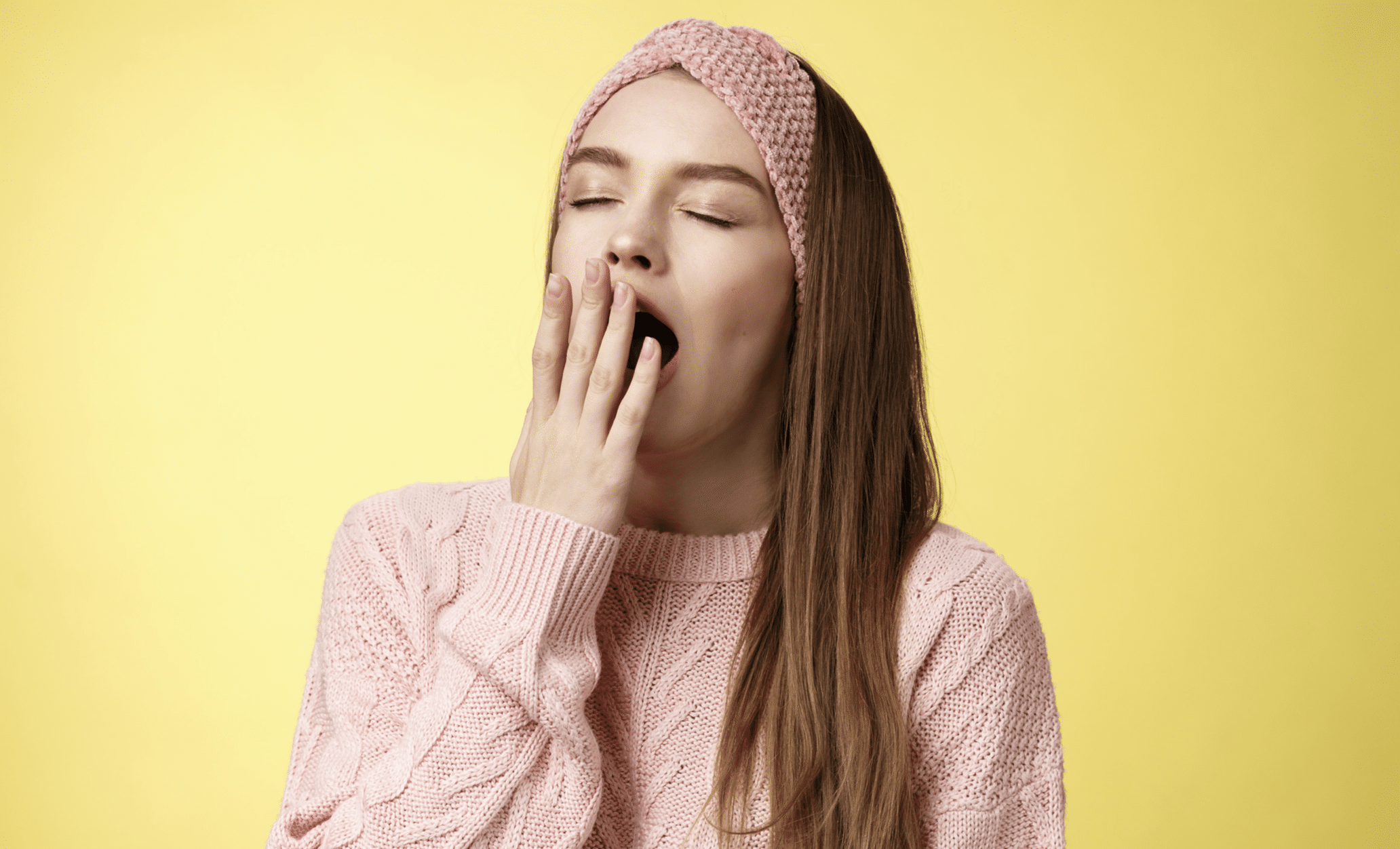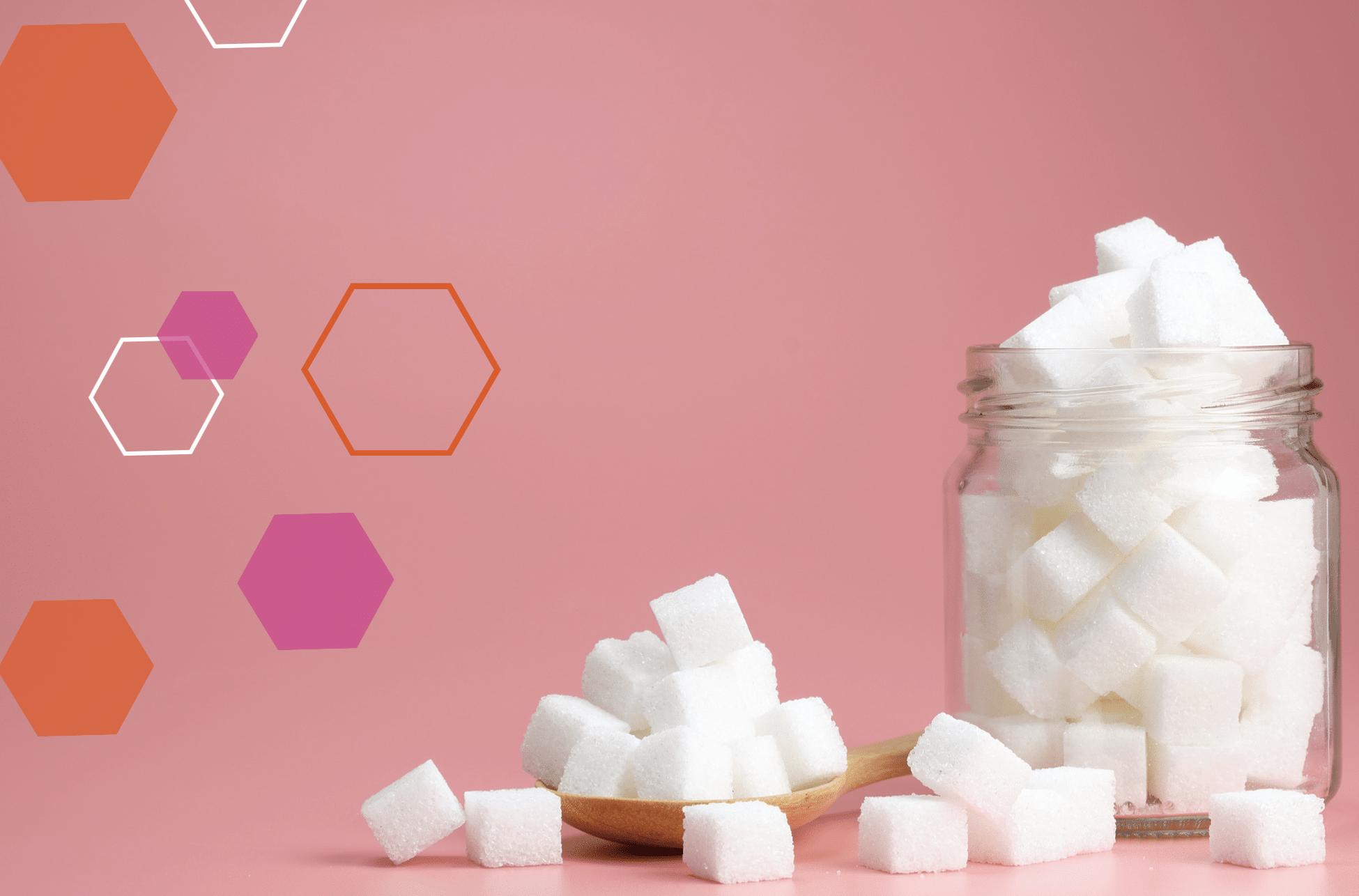What’s the best way to outsmart your sweet tooth and get rid of sugar cravings for good?
If you’ve tried to ditch sugar before, you know this answer isn’t an easy solution. Your brain and body are so used to relying on sugar (i.e., glucose) for energy that it feels impossible to function without it.
But excess sugar in our diets has been linked to many adverse health conditions, from type 2 diabetes, heart disease, and Alzheimer’s to weight gain, an inability to lose weight, infertility, and more.
In this article, we’ll explore what causes sugar cravings in the first place. Then, once you know what you’re up against, we’ll discuss what to do when a sugar craving strikes and how to stop sugar cravings forever.
You can beat a sweet tooth! But that starts with understanding.
What Causes Sugar Cravings Anyway?
Sugar cravings can be caused by poor diet and lifestyle habits, nutrient deficiencies, hormonal fluctuations (like PMS or perimenopause), emotional factors, and other health issues. For most people, sugar cravings result from an unrealized sugar addiction.
Let’s dive into the science behind what may be causing your cravings.
You Have a Low-Key Sugar Addiction
You may avoid obvious sweets like candy bars, cookies, and soda. But did you know the average American consumes 17 teaspoons of added sugar daily?¹
Manufacturers add sugar to 74% of packaged foods sold in supermarkets, hiding sugar under 61 different names on food labels.² You’ll find these added sugars in “healthy” foods like granola, low-fat yogurt, low-calorie salad dressings, pasta sauces, ketchup, and so much more.
Here’s the problem: It doesn’t matter what type of sugar you consume; it all gets your brain addicted. Researchers say sugar officially meets the criteria for a substance that may be addictive and abused.³
Worse? Sugar’s reward-center activation in our brains may be stronger than some drugs like cocaine.⁴
When we eat sugar, our brain releases a flood of feel-good neurotransmitters such as dopamine, serotonin, and endorphins.⁵ These pleasurable signals make us feel comforted, happy, or relieved when indulging in a sweet treat.
However, just like a drug, this quick high leads to withdrawal symptoms if we’re not constantly feeding our “habit.” Symptoms of sugar withdrawal include:⁶
Irritability and anger
Brain fog
Anxiety
Depression
Dizziness
Headaches
Insomnia
Flu-like symptoms (nausea, fatigue, body aches, etc.)
Mood changes
Because we don’t want to experience these withdrawal symptoms, our brains naturally crave the sweet stuff to keep us in that pleasure zone. Like an addict, we may even binge on sugary foods to seek out that “rush” when those symptoms kick in.
Unfortunately, the more we give in to our sweet tooth, the stronger and more frequent our sugar cravings become.
Poor Sleep
Researchers say sugar’s effect on our brain’s reward center is stronger when we’re sleep deprived.⁷ We’re also more likely to be tempted by and indulge in poor food choices when tired.⁸
Just one night of crummy sleep has the power to increase our ghrelin levels (the “hunger” hormone) and decrease our leptin levels (the “satiety” hormone).⁹ So, waking up exhausted puts us on a constant rampage for sweets, but — here’s the worst part — eating them will never satisfy us when we’re in this state.
Fortunately, clocking enough snooze time could correct this drive for sugar cravings. Researchers in one study learned that people who slept more each night lowered their sugar intake by as much as 10 grams the following day.¹⁰

Unbalanced Gut Bacteria
We have a mix of healthy and harmful bacteria in our gut microbiome, known as our gut flora. This bacteria influences our digestion, immune system, and overall health.
Thanks to the gut-brain axis — a bidirectional communication highway from our guts to our brains — our gut flora may even impact our thoughts and feelings.
Eating sugar feeds the harmful bacteria in our guts, allowing them to thrive and eventually overrun the healthy kind. But here’s the scary part: Scientists have discovered that bad bacteria can trick our brains into craving sugar to help them kill the good bacteria!¹¹
It just doesn’t seem fair, does it?!?
Luckily, we can stop the harmful bacteria from achieving gut flora domination by adding more prebiotics, probiotics, and fermented foods (e.g., kimchi, kefir, sauerkraut, or kombucha) to our diet. This will help restore our microbiome to healthier conditions (and lead to fewer sugar cravings).¹²
Stress and Emotions
We know sugar activates those feel-good reward centers in our brains. Researchers say having sweet cravings (and giving into them) often aligns with times when we’re:¹³
– Unhappy, sad, or depressed
– Anxious and stressed
– Bored or lonely
However, using sugar to cope with these emotions will only reinforce the negative sugar cycle (i.e., craving > binging > withdrawal > craving, etc.).
So, it’s important that we learn how to satisfy a sweet tooth without sugar. And that may come down to understanding the difference between actual hunger and mental/emotional triggers.
When you’re actually hungry, you’ll experience:
– Physical hunger cues (like a growling stomach)
– Hunger that grows slowly between your last meal or snack
– Satisfaction from any food
When you’re emotionally hungry, you’ll experience:
– No physical cues of hunger
– Sudden hunger; little time passes between meals/snacks before you want another “hit” of something
– Specific cravings (like chocolate or ice cream)
– No true satisfaction from eating
We’ll talk about how to handle emotional sugar cravings later. Now that you know how to tell the difference between hunger and a sugar craving, let’s discuss:
How to Get Rid of Sugar Cravings for Good
So, how do you conquer a sweet tooth? These five long-term strategies will help you overcome sugar cravings once and for all.
1. Ditch Processed Sugar Completely
How long does it take to break a sugar addiction? That answer is different for everyone. But there is one universal fact: Once you ditch sugar, your cravings eventually disappear.
To achieve this goal, avoid refined carbs and foods with added sugar for two weeks. Make high-fiber fruit (like berries) your only source of sweetness.
The first three days will be the hardest. Your body and brain will slowly deplete their sugar stores and go through withdrawal symptoms. But trust that you will adjust after that time.
The longer you go without sugar, the easier it will become to ignore it. You’ll feel a difference as your neurotransmitters return to normal levels, and sugar cravings become a thing of the past. You’ll find more focus, better sleep, stable moods, and more. All those perks will motivate you to adopt this lifestyle change for good.
2. Anchor Your Carbs
With fruit as your only source of sugar, the next step is learning what to eat when you’re craving sweets. Eating “naked” carbs like fruit alone will trigger a spike in your blood sugar levels, a quick rush of energy, and an eventual crash (cue the sugar withdrawal symptoms).
“Anchoring” means pairing carbs (like fruit) with a protein or healthy fat. Protein and fat blunt the sugar spike, lead to steady and sustained energy levels, and prevent the crash and sweet cravings later.
Opt for pairings like:
– Strawberries and full-fat cottage cheese (low-fat options contain more sugar)
– Dark chocolate and sunflower seed butter
– Greek yogurt with blueberries
– Raspberry protein smoothie
– Half a banana with hazelnuts, pumpkin seeds, or hemp seeds
– Blackberries with gouda, cheddar, or goat cheese
The natural sugar in those whole-food dynamic duos will satisfy your sweet tooth and get you off that internal sugar roller coaster.
3. Always Eat Enough Protein — Especially for Breakfast
How do you beat a sweet tooth all day? Research shows meals containing at least ∼25-30 grams of protein are the most satisfying, which leaves little room for sugar cravings to creep in.¹⁴
One study even revealed that people who ate a breakfast containing 35 grams of protein had fewer cravings during the day than those who skipped breakfast or noshed on just 13 grams of protein.¹⁵
So, start off on the right foot when you wake up — and don’t go more than three or four hours without a protein-rich snack or meal — to kick your sugar cravings to the curb. You’ll score a steady energy supply for your body and brain all day.
4. Satisfy Your Nutritional Needs
What vitamin deficiency causes sugar cravings? Several, potentially. Scientists say you should focus on meeting your recommended daily intake (RDI) of:
Vitamins B6 and B12. Studies show these B vitamins support neurotransmitter production (specifically serotonin and dopamine) and reduce cravings.¹⁶
Chromium picolinate. Researchers learned chromium picolinate helped study participants lower their hunger levels, eat less, reduce cravings, and improve their moods (to prevent stress/emotional eating).¹⁷,¹⁸
Magnesium. This mineral and electrolyte helps reduce stress and anxiety, supports better sleep, boosts energy levels, and helps stabilize blood sugar levels.¹⁹ All those perks may erase sugar cravings.
Ideally, you’ll want to get these nutrients from a healthy whole-food diet. But a high-quality daily multivitamin also does the trick.
5. Replace Sugar with Spice
Sugar gives your tastebuds a zing. So figuring out how to get rid of a sweet tooth may mean tricking your tastebuds with bold flavors from sugar-free sources.
Consider using:
Extracts like vanilla, orange, lemon, banana, anise, etc. They’ll elevate the flavor of any drink, smoothie, or snack without adding carbs or sugar.
Spices like cinnamon, nutmeg, allspice, ginger, and clove mimic those found in sweet treats. Your brain will believe your yogurt with cinnamon and vanilla tastes like ice cream. Bonus: Many spices help with blood sugar control.²⁰
Herbs like mint, rosemary, and basil can be added to sugar-free seltzers for refreshing mocktails or infused waters to help eliminate a soda habit.
Zest from citrus fruits also adds a burst of flavor to drinks, yogurt, cottage cheese, smoothies, salads, etc., without any added sugars.
Hot peppers. Replacing heat for sweet releases endorphins and boosts dopamine levels, leading to the same euphoric sensations triggered by eating sugar. Spicy foods may also suppress appetites and cravings.²¹,²²
Peppermint. Studies show simply smelling peppermint may decrease your appetite and cravings.²³ This may be why many people brush their teeth after a meal to prevent eating dessert. You can try peppermint tea, extract, or grow your own to flavor meats like lamb, add to salad, or infuse water.
Make sure everything you eat tastes like a treat, even savory proteins and veggies, and you’ll enjoy your food more. This tells your brain that you’re satisfied and need nothing else.
Follow these five tips, and you’ll find yourself asking, “Why do I no longer crave sugar?” But in the meantime, let’s talk about how to get rid of a sweet tooth when it’s screaming for attention.

How to Stop Sugar Cravings Instantly
What kills a sweet craving in the moment? These four tips will empower you to be in control the next time a sugar craving strikes:
1. Mindfully Savor a Two-Bite Craving
Ever notice how the first one or two bites of something decadent taste better than the last? It’s not you; scientists call it “sensory-specific satiety.”²⁴
But as the mind-blowing flavors of something novel or delicious wear off, each bite diminishes in those sensations.
Knowing this, be intentional with your cravings and only indulge in one or two bites. And when you do, practice mindful eating:
– Take a deep breath before each bite
– Use each of your five senses to fully taste that food
– Think about what that food triggers mentally or emotionally (e.g., happy memories)
– Be present and away from distractions (like the TV or your phone)
This satisfies your craving in the moment and keeps you from feeling deprived, which is when you’re most likely to binge “off-limits” foods. You’ll savor your sweet treats without going overboard.
2. Don’t Mistake Hunger for Thirst
Let’s say you’re totally ditching sugar (including most fruit) or going low-carb or keto. You may wonder, “How can I satisfy my sweet tooth without sugar?”
And the answer is as simple as drinking water (or another tasty, no-sugar beverage).
Interestingly, the mild signs of dehydration are almost identical to those of sugar withdrawal. You’ll feel low on energy, unable to focus, irritable, lightheaded, etc.
So when a sugar craving comes on, try drinking:
A full glass of water. You can infuse your water with fruit, herbs, citrus zest, and more to convince yourself to reach your daily hydration goal.
Unsweetened hot tea. You’ll find sugar-free black, green, and herbal teas with sweet flavors like apple, vanilla, orange, raspberry, elderberry, cinnamon, peppermint, and even chocolate.
Sugar-free soda alternatives. Stay away from diet sodas that are full of artificial sweeteners (which make sugar cravings worse).²⁵ Stock up on sparkling mineral water and add your own flavor additions via extracts, herbs, spices, zests, or even pieces of fruit.
How much water you should drink varies based on your body, medical conditions, exercise, weight, etc. So speak with your doctor about a target water goal and listen to your body’s cues.
3. Try Urge Surfing
Urge surfing is a technique based on mindfulness that can help you avoid acting on urges or behaviors you want to stop.²⁶ Scientists say urges like sugar cravings rarely last longer than 30 minutes. So if you can “stick it out,” you can surf the wave of an urge without going under.
To practice urge surfing:
- Focus on your breathwork. Take deep inhales and exhales when a craving strikes.
- Notice your thoughts. Are you stressed, sad, or happy? Acknowledge these thoughts and normalize your emotions. Tell yourself you’re in control.
- Think about what the craving feels like. Where is it in your body? Are there physical or mental sensations along with it? How would you describe it to someone? Is the intensity getting stronger or weaker with your breath?
Keep breathing and slowly count to 25. Since sugar cravings tend to rely on immediate gratification, they may subside with your delayed response. If they don’t, sit in this meditative state for 10 minutes. If your craving is just as intense after this time, follow the two-bite rule from the previous tip.
4. Trick Your Brain’s Reward Circuitry
When your brain sends a cue to eat more sugar, it rewards you with those happy hormones and neurotransmitters when you comply. So next time a sugar craving tempts you to the dark side, trick your brain’s circuitry with a different type of reward.
You can outsmart your sugar craving with a:
Pleasurable distraction. Meditate, listen to music, watch cat videos on YouTube, read a chapter of your favorite book, garden, cook/bake a new recipe, play a video game — whatever brings you joy will help you forget all about the sweets you want to ignore.
Walk in nature. Besides helping you get your daily 10k steps, walking outdoors delivers incredible mental health benefits.²⁷ Plus, researchers say a 15-minute walk reduces urges for sugary snacks.²⁸
Self-care activity. Take a luxurious warm bath or a quick cold shower. Do a facial mask or gua sha routine. Give yourself a mani/pedi. Show yourself a little TLC to prove you control your happiness (not sugar).
Social and emotional connection. Call a family member, text a friend, or meet up for coffee when you’d typically binge sweets during your afternoon slump.
If you treat a sugar craving as your brain’s nudge for help, these activities will all “reward” you with the joy, stress relief, or connection it’s really seeking.
Now You’re Ready to Outsmart Your Sweet Tooth
So is it possible to lose a sweet tooth? Absolutely! And the sweetest part of doing so is feeling more in control of your body.
Once you understand your triggers, you’ll know whether to get rid of sugar cravings with a lifestyle change (like more sleep), diet swaps (eating more protein), or distraction activities that bring joy and banish negative emotions.
So start with one tip you know you can do today. Then add another to your plate tomorrow. Repeat until all the tips in today’s game plan become second nature. We promise you’ll never look back.
References
- https://www.cdc.gov/nutrition/data-statistics/added-sugars.html
- https://sugarscience.ucsf.edu/hidden-in-plain-sight/#.Y9w_nh1JnMV
- https://www.ncbi.nlm.nih.gov/pmc/articles/PMC2235907/
- https://journals.lww.com/co-clinicalnutrition/Abstract/2013/07000/Sugar_addiction__pushing_the_drug_sugar_analogy_to.11.aspx
- https://www.sciencedaily.com/releases/2017/08/170828102719.htm
- https://mentalhealthdaily.com/2014/07/19/sugar-withdrawal-symptoms-list-of-possibilities/
- https://www.sciencedaily.com/releases/2012/06/120610151447.htm
- https://pubmed.ncbi.nlm.nih.gov/23922121/
- https://www.ncbi.nlm.nih.gov/pmc/articles/PMC535701/
- https://www.sciencedirect.com/science/article/pii/S0002916522027617?via%3Dihub
- https://www.scientificamerican.com/article/how-gut-bacteria-tell-their-hosts-what-to-eat/
- https://www.ncbi.nlm.nih.gov/pmc/articles/PMC4270213/
- https://www.ncbi.nlm.nih.gov/pmc/articles/PMC4150387/
- https://pubmed.ncbi.nlm.nih.gov/25926512/
- https://nutritionj.biomedcentral.com/articles/10.1186/1475-2891-13-80
- https://globesity.foundation/obesity-research/supplements-effect-on-weight-loss-diabetes-cravings/vitamin-b6-effects-on-weight-reduction-cravings-and-diabetes-in-globesity-bootcamp-for-the-obese/
- https://pubmed.ncbi.nlm.nih.gov/18715218/
- https://journals.lww.com/practicalpsychiatry/Abstract/2005/09000/A_Double_Blind,_Placebo_Controlled,_Exploratory.4.aspx
- https://www.ncbi.nlm.nih.gov/pmc/articles/PMC4455825/
- https://biocoreopen.org/ijnf/Herbs-and-Spices-for-Diabetes.php
- https://www.sciencedirect.com/science/article/pii/S1389041720300772
- https://biocoreopen.org/ijnf/Herbs-and-Spices-for-Diabetes.php
- https://www.researchgate.net/publication/247357832_Effects_of_peppermint_scent_on_appetite_control_and_caloric_intake
- https://www.vice.com/en/article/3kvmn3/why-does-the-first-bite-of-ice-cream-taste-better-than-the-last
- https://www.ncbi.nlm.nih.gov/pmc/articles/PMC2892765/
- https://www.dartmouth-hitchcock.org/sites/default/files/2021-03/urge-surfing.pdf
- https://www.ncbi.nlm.nih.gov/pmc/articles/PMC8953618/
- https://www.ncbi.nlm.nih.gov/pmc/articles/PMC4356559/



